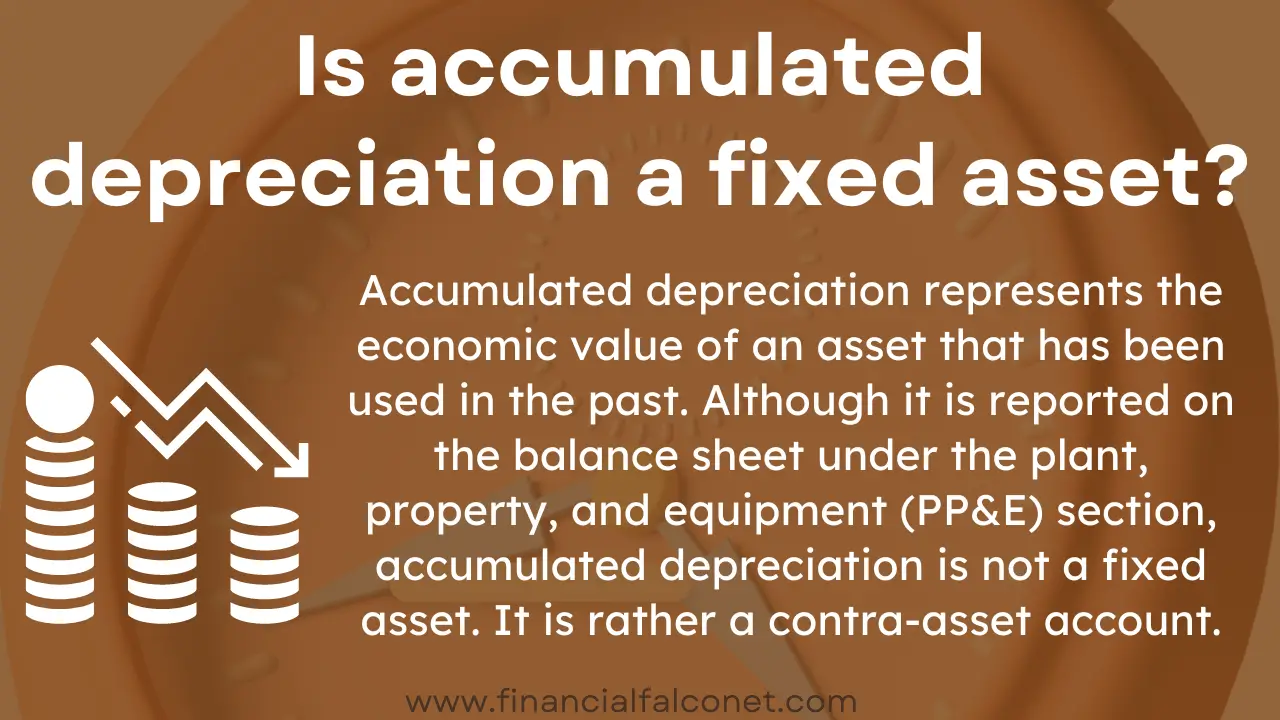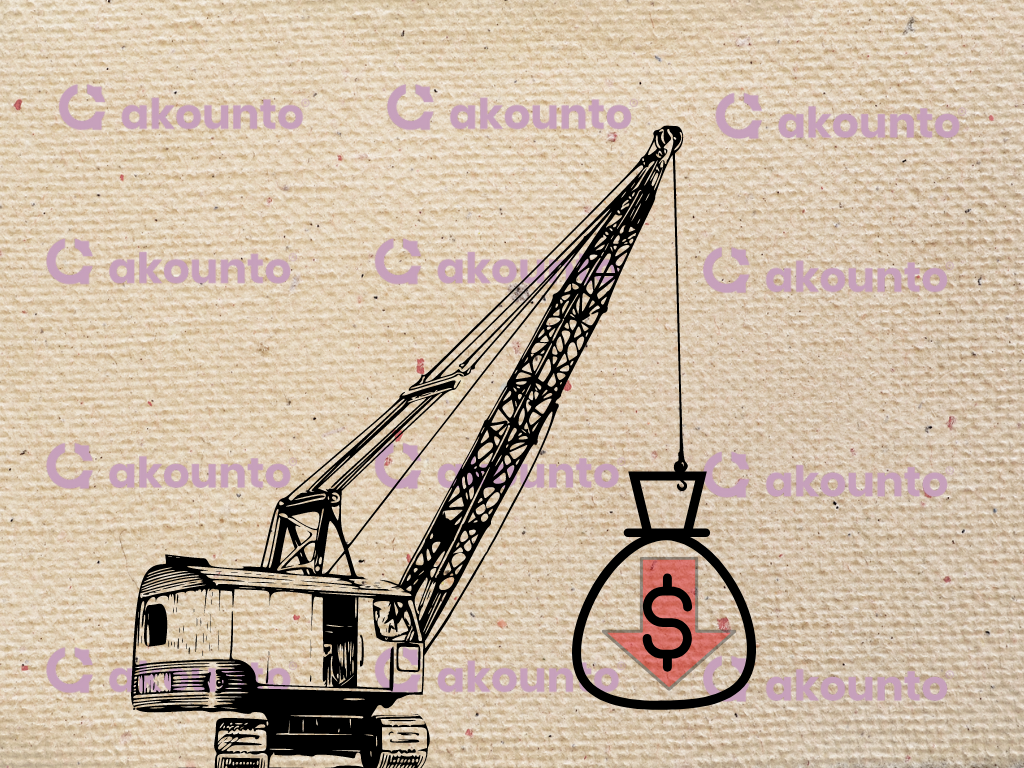Is Accumulated Depreciation an Asset? How to Calculate It?

From an accounting standpoint, the depreciation expense is debited, while the accumulated depreciation is credited. Small businesses have fixed assets that can be depreciated such as equipment, tools, and vehicles. For each of these assets, accumulated depreciation is the total depreciation for that asset up to and including the current accounting period. Accumulated depreciation is typically shown in the Fixed Assets or Property, Plant & Equipment section of the balance sheet, as it is a contra-asset account of the company’s fixed assets. Showing contra accounts such as accumulated depreciation on the balance sheets gives the users of financial statements more information about the company. Accumulated depreciation is the grand total of all depreciation expense that has been recognized to date on a fixed asset.
Is accumulated depreciation a debit or credit?
Your business can make better decisions when you understand the financial status of assets. While depreciation is recorded as an expense on the income statement, it doesn’t involve an outflow of cash. Accumulated Depreciation is crucial for presenting a company’s financial health accurately. It reduces the carrying value of assets on the balance sheet, which impacts metrics like book value, net income, and taxes.
Q. Does Accumulated Depreciation Affect Cash Flow?
There are several assets that accrue accumulated depreciation—some of these most common assets include buildings, vehicles, and equipment. In this case, you can use the straight-line method to calculate the annual accumulated depreciation of the asset. Then, instead of assigning a full year of depreciation in the first year, you assign half of that to the first year, and half of that to the final year.
Depreciation Expense and Accumulated Depreciation

Using this new, longer time frame, depreciation will now be $5,250 per year, instead of the original $9,000. That boosts the income statement by $3,750 per year, all else being the same. It also keeps the asset portion of the balance sheet from declining as rapidly, because the book value remains higher.
Assets encompass a wide range of items, including cash, property, equipment, investments, and more. In financial accounting, assets are typically categorized as current assets (short-term) and non-current assets (long-term). When you record depreciation on a tangible asset, you debit depreciation expense and credit accumulated depreciation for the same amount. This shows the asset’s net book value on the balance sheet and allows you to see how much of an asset has been written off and get an idea of its remaining useful life. Instead, an account called accumulated depreciation records the total decline in the asset’s value over the time it’s used.
- As mentioned, accumulated depreciation represents the sum of all depreciation expenses for a particular asset as of a certain point in time.
- As a result, the statement of cash flows, prepared using the indirect method, adds back the depreciation expense to calculate the cash flow from operations.
- Depreciation expense is reported on the income statement just like any other normal business expense.
- The loss on an asset that arises from depreciation is a direct consequence of the services that the asset gives to its owner.
Depreciation Is a Process of Cost Allocation
As such, it is considered a contra asset account, which means that it contains a negative balance that is intended to offset the asset account with which it is paired, resulting in a net book value. If a business has been depreciating its fixed assets for a long time, then the balance in the accumulated depreciation account could be quite large. Companies can depreciate their assets for accounting and tax purposes, and they have a number of different methods to choose from. A depreciation expense, on the other hand, is the portion of the cost of a fixed asset that was depreciated during a certain period, such as a year. Depreciation expense is recognized on the income statement as a non-cash expense that reduces the company’s net income or profit.
Depreciation allows businesses to spread the cost of physical assets over a period of time, which has advantages from both an accounting and tax perspective. Businesses have a variety of depreciation methods to choose from, including straight-line, declining is accumulated depreciation a current asset balance, double-declining balance, sum-of-the-years’ digits, and unit of production . Generally, accumulated depreciation accounts are paired with the fixed asset accounts found on the balance sheet’s property, plant, and equipment section.
If an asset is depreciated for financial reporting purposes, it’s considered a non-cash charge because it doesn’t represent an actual cash outflow. And, the depreciation charges still reduce a company’s earnings, which is helpful for tax purposes. The straight-line depreciation method is a simple and straightforward calculation where you divide the asset’s depreciable value over its useful life. To calculate the depreciable value, you deduct the salvage or residual value from the total cost.
Accumulated depreciation is not an asset; it does not offer any long-term value. It lowers taxable income and, subsequently, tax liabilities, providing cost savings for businesses. Accumulated Depreciation data is often presented in aggregate form, making it challenging to discern the depreciation of individual assets.
Using the straight-line method, you depreciation property at an equal amount over each year in the life of the asset. Learn how to build, read, and use financial statements for your business so you can make more informed decisions. Our team is ready to learn about your business and guide you to the right solution. Units refer to the total amount of units of output you expect from the asset (for a vehicle, you might expect to drive 100,000 miles, so you would have 100,000 total units. The depreciable base is the outset value of your asset minus the salvage value. If you don’t expect to receive a salvage value, then your depreciable base is the amount that you initially paid for the asset.
No matter which method you use to calculate depreciation, the entry to record accumulated depreciation includes a debit to depreciation expense and a credit to accumulated depreciation. For example, say Poochie’s Mobile Pet Grooming purchases a new mobile grooming van. If the company depreciates the van over five years, Pocchie’s will record $12,000 of accumulated depreciation per year, or $1,000 per month. Accumulated depreciation is not a current asset, as current assets aren’t depreciated because they aren’t expected to last longer than one year.